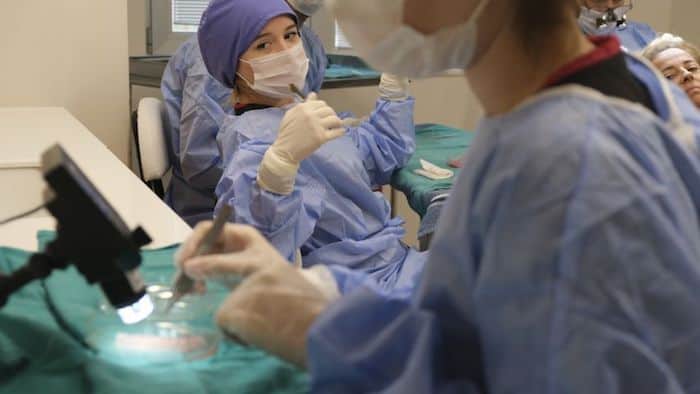
After choosing to have a hair transplant procedure, you commenced your own research to get as much as possible regarding the available alternatives. This is a valid approach since you’ll be able to secure a fussy discussion with your hair specialist to find out the right option for you.
Further, after rambling with the research, one of the best hair transplant methods you can come across is the DHI (Direct Hair Implant) technique. It is among the best-known and modernized methods in the hair transplant range that you can barely miss the mark with.
The DHI is more like the FUE hair implant technique, with the main modification on how the hair is planted. For FUE hair transplant, the surgeon creates incisions throughout the entire scalp and allocates the follicular components into these incisions.
In the DHI hair transplant technique, the method calls for a patented tool to plant each hair, one by one, right into the scalp without making any slits. Alternatively, an automatic hair transplant system can be used- a robotic system that calculates the depth and angle required for every hair follicle.
It is quite impractical to focus only on the advantages of DHI without considering the cynical aspects of this procedure. Moreover, it’s sensible to discuss both the pros and cons of DHI along with other hair transplant techniques with your hair specialist so that you’re aware of all the possibilities of DHI before making your decision.
Advantages of DHI Hair Transplant
No scarring: Incisions are practically associated with scaring. For that reason, the DHI hair transplant method applies the Choi pen technique, which eliminates the need for incisions, and therefore no instances of scarring.
Also, there’s no need to sew the source region where the hair follicles are extracted so that the healing process will be much faster. The DHI tool helps to ensure that extractions are well-distributed to minimize the risk of scarring as much as possible.
Consistent results: As a modernized technique, the DHI implanter controls the angle, depth, and trend of the planted hair follicles. So the new hairs grow just like your natural hair.

When the hair tissues and roots are allocated to the operation area, the growth angle, colours, and the hair’s natural direction are taken into account. This way, you get natural results in all sensitive regions, including temples and hairline. Again, there are no scars or stitches with the DHI transplant, meaning you’ll recover quickly.
No grooving or suture is performed, therefore no traces or scars problems after the operation. So you return to your routine life within a short time.
Unlike classical sowing techniques, the DHI method supports multiple root transplants for more hair growth and fast results. For instance, in the traditional FUE technique, patients have to wait at least three days before washing their hair- unlike the DHI method, where you can wash it on the same day after sowing.
Although it depends on your preferences, sowing can be performed without shaving. When dealing with pen technique preferred by women, one can achieve the quickest return to normal life with unshaved hair implant application, without experiencing any differences.
Disadvantages of DHI Hair Transplant
Slow Process and can take days in comparison to other techniques. It can take as much as ten hours for a DHI hair transplant with 3000 grafts. This is why surgeons usually grant the patients the option to split their line into shorter, more manageable sessions, usually over 2-3 days.
An FUT hair implant that offers 3000 grafts needs about 4-6 hours and 6-8 hours for a FUE hair implant technique. But coming back to DHI, the same process can take much longer. Nonetheless, if you’re planning to accomplish the entire DHI procedure in one day, rest assured the process will span ten hours or more.

Higher Costs: When it comes to the economy, the DHI is the most exclusive hair transplant approach, and can be a real challenge, especially for people under a budget constraint. Taking a case of 3000 grafts of hair, the implant can cost roughly 2-3 lakhs. This is because of the technology employed during the process.
It’s regarded as the best method in this field, but clearly the most expensive. Other methods such as FUE hair implant typically workout around 1 lakh, whiles an FUT will just need 60 thousand.
Make sure the hair transplant clinic or the hospital where you’ll have the hair transplant is sterilized, has experienced hair specialists, latest technology, and modernized methods of planting. Turkey boasts some of the best, highly qualified and certified DHI doctors, along with budget pricing that makes it a curative destination for persons with hair loss.
The Editorial Team at Healthcare Business Today is made up of skilled healthcare writers and experts, led by our managing editor, Daniel Casciato, who has over 25 years of experience in healthcare writing. Since 1998, we have produced compelling and informative content for numerous publications, establishing ourselves as a trusted resource for health and wellness information. We offer readers access to fresh health, medicine, science, and technology developments and the latest in patient news, emphasizing how these developments affect our lives.







